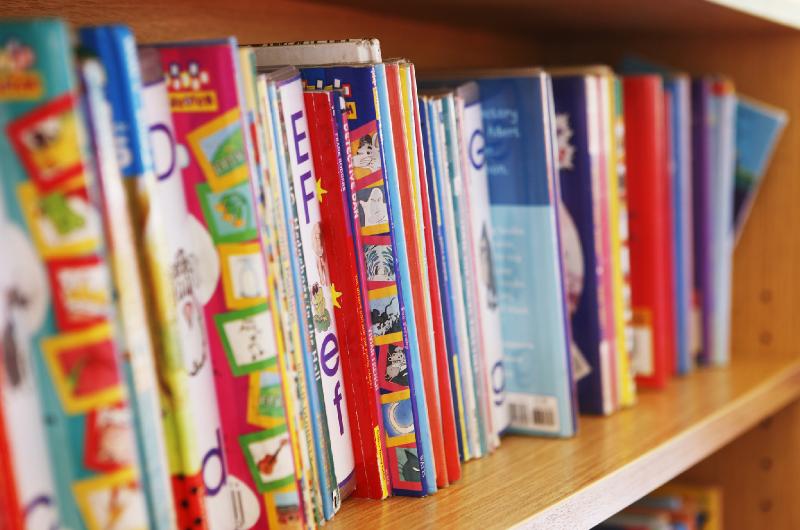Children's Books: Bedtime Lessons for the Zoomed-Out Kid
By: Meghan Cox Gurdon (WSJ)



If ever there were a time for parents to sneak a bit of education into storytime, this is it. Teachers may be knocking themselves out on Zoom, and bravo for that, but a face on the screen has yet to trump the power of an in-person read-aloud. So adding nonfiction to the bedtime mix is a wonderful way to enhance a child’s understanding while regular schooling is on the fritz.
Lily Snowden-Fine’s colorful, naif illustrations for “Why Do Cats Meow?” (Thames & Hudson, 45 pages, $16.95) give this picture book a fun and undaunting appearance, yet as children ages 4-11 go through it they’ll pick up a good deal of knowledge, some quite surprising. They’ll learn that a cat meows to communicate—no shocker there—but solely for one type of audience. According to author and zoologist Nick Crumpton, “adults cats only meow at humans.” Interesting, no? Similarly, it turns out that a cat’s whiskers are like sensitive antennae, which seems self-evident, but also, less obviously, practical tools of measurement. “Whiskers on the face help a cat decide if a space is large enough for it to get through,” Mr. Crumpton explains. “This is because the whiskers are as long as the cat is wide.” Organized as a series of questions (“Do cats have nine lives?” “Is my cat ignoring me?”), with accessible factual answers, this enjoyable picture book will leave even veteran cat-lovers with their info-bank replenished.
For jolliness of illustration and lightness of pedagogy, “The B on Your Thumb” (Frances Lincoln, 80 pages, $19.99) works a similar magic with the quirks of English spelling and pronunciation. The idea here is for children ages 3-8 to hear and learn ditties that will help them fix certain concepts in their minds as they learn to read and write. The pages are packed with lively, goofy pictures by Tor Freeman (see below) that go along with 60 short poems by Colette Hiller. Sometimes the verses rely on mnemonic repetition, as with Ms. Hiller’s treatment of the vowel blend “oa.” As happy animals look on, a wedding takes place: “A gentleman g oa t fell in love with a t oa d, / whom he happened to meet by the side of the r oa d. / He adored her low thr oa t, / she adored his fur c oa t, / And so they were married, the t oa d and the g oa t.”
Elsewhere the device is metaphor, as in a poem to help kids spell the tricky word “separate.” In Ms. Freeman’s illustration, an alarmed-looking capital “R” holds apart two quarrelling vowels: “Separate / has two As. / They don’t get on, it’s true. / Luckily, there is an R / to sepaRate the two.” This is the sort of picture book that will bear up under repeated childhood readings and may even be of use to adults.
The study of history has an infinite number of entry points. In a touching picture book about a family property in Germany, Thomas Harding shows children ages 4-11 that large events can have repercussions even in small and unheralded places. “The House by the Lake” (Candlewick, 48 pages, $17.99) is spare in language, drawing just the essential narrative details from Mr. Harding’s 2015 nonfiction work for adults of the same title. The house in question is a pretty one-story structure that still stands where Mr. Harding’s great-grandfather built it in 1927, on the outskirts of Berlin. But as children will see here, the sweeping violence and political tides of the 20th century caused the house to be occupied and abandoned, filled and emptied, and finally left to rot until Mr. Harding made his way to it after the Berlin Wall came down. There’s a quiet, soulful quality to Britta Teckentrup’s mixed-media illustrations, which have the feel of woodcuts. Through the story of the house, young readers will get glimpses of what was happening in the wider world. Gestapo men force out the original owners. The next family flees when the father is called up for military service. Unoccupied, the house becomes a silent witness as warplanes drone overhead and “the sky burn[s] orange.” Later comes the Soviet occupation—tanks crawl past the house in thick falling snow—and the outrage of the Berlin Wall, which cuts the house off from its lake. “The grayness hung for so long that it seemed like it would never end,” we read. “Then without any warning, the soldiers and barking dogs went away.” Though the book ends on a gratifying upward lilt, readers may be left with an abiding touch of melancholy.
Across the world, native plants and animals are having to compete with invasive species that arrive with advantages. It is a phenomenon everywhere to be seen, and of long duration. South American cane toads are running amok in the Philippines. Fast-growing Japanese knotweed is stealing the sunshine from plants indigenous to New England. In a tactile and disarmingly beautiful little book, “Plasticus Maritimus” (Greystone Kids, 176 pages, $19.95) , Portuguese marine biologist Ana Pêgo, with Isabel Minhós Martins, invites young readers to consider a different kind of invasive species: the innumerable pieces of plastic in the world’s lakes, seas and oceans.
It’s a clever framing, not only to suggest that quantities of man-made material can amount to a species but also to use such a beguiling volume to argue against an ugly tide. In Bernardo P. Carvalho’s delightful, colored-pencil drawings and Ms. Pêgo’s own photographs, bits of sea-tossed plastic appear almost ornamental. Yet the text (translated by Jane Springer) leaves no doubt of their ill effects on marine ecosystems. Readers age 11 and older are likely to finish this book feeling both persuaded and uplifted. Beauty has a way of doing that.








